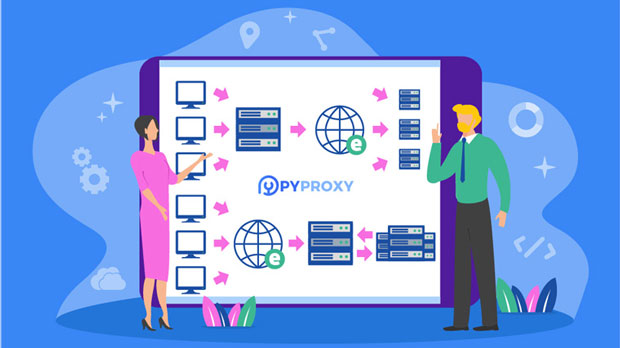When it comes to choosing proxies, many users are drawn to the term "cheap residential proxies," assuming they are both affordable and reliable. But the real question is: do cheap residential proxies truly deliver what they promise? In this article, we will explore whether cheap residential proxies are genuinely cost-effective and performant, or if they come with hidden pitfalls that could jeopardize your projects. We'll analyze the various aspects of residential proxies, including their benefits, drawbacks, and factors that impact their pricing. By the end of this guide, you'll be equipped with the knowledge to make an informed decision about whether "cheap" residential proxies are a worthy investment for your needs. What Are Residential Proxies?To begin, it's important to clarify what residential proxies are and why they are often preferred for certain tasks. Residential proxies are IP addresses provided by Internet Service Providers (ISPs) to homeowners. These IPs are then rented out by proxy service providers, making them appear as though they belong to regular individuals rather than data centers. The primary advantage of residential proxies is that they are harder to detect, making them ideal for tasks like web scraping, bypassing geo-restrictions, or managing multiple social media accounts without getting blocked.Why Do People Seek Cheap Residential Proxies?Many users turn to cheap residential proxies due to budget constraints or the need for large-scale proxy operations. Whether it's for scraping, online research, or testing products across various regions, affordability is a key consideration. In theory, cheap residential proxies offer a way to conduct these activities at a lower cost compared to premium alternatives.However, the term "cheap" can often be misleading. While some providers may market their proxies as cheap and effective, the quality and performance of these proxies can vary significantly based on several factors.Quality of Service and ReliabilityThe first consideration when discussing the effectiveness of cheap residential proxies is the quality of service. Proxies that are priced lower might have a few issues that affect their reliability:1. Speed and Performance: Cheap proxies often suffer from slow speeds due to network congestion or a large number of users sharing the same IP pool. This can be detrimental for tasks that require high-speed connections, such as online gaming, streaming, or real-time scraping.2. Connection Stability: Many affordable proxies lack the stability required for consistent performance. Frequent disconnections or timeouts can disrupt operations, especially for long-term projects that require uninterrupted access.3. IP Rotation and Freshness: A reliable residential proxy service should offer frequent IP rotation to avoid detection. Cheap services may have a smaller IP pool or rotate IPs less frequently, making them more vulnerable to blocking or blacklisting.Security and Anonymity RisksAnother critical aspect of residential proxies is the level of security and anonymity they provide. Cheap residential proxies might come with several security vulnerabilities:1. Data Leaks: Lower-cost services might not have robust security protocols in place, leaving users vulnerable to data leaks. This could expose sensitive information or activity logs to unauthorized parties.2. Shared IP Risks: Many cheap residential proxies rely on shared IPs, meaning that multiple users are accessing the internet from the same residential IP address. This increases the likelihood of being flagged by websites that detect unusual traffic patterns.3. Lack of Encryption: Some budget proxies might not offer sufficient encryption, making your data susceptible to interception by malicious actors. This is particularly concerning if you're using proxies for tasks that involve sensitive information, such as e-commerce or financial research.Support and Customer ServiceCustomer support is often overlooked when it comes to cheap proxies, but it's essential for ensuring smooth operations. Cheaper services typically offer minimal customer support or rely on automated systems that may not address specific issues. This lack of personalized service can be frustrating, especially when you're facing problems like connectivity issues, billing errors, or account suspensions.Premium proxy services, on the other hand, usually provide 24/7 customer support, with dedicated proxies who can quickly resolve any problems you encounter. If you're working on a critical project, the lack of timely assistance from a cheaper provider might lead to unnecessary delays.How Pricing Affects Proxy QualityThe old adage “you get what you pay for” holds true when it comes to proxies. While it's tempting to opt for the cheapest option available, it's essential to understand the relationship between price and quality. A very low price typically correlates with lower-quality proxies, which may result in slower speeds, higher risk of detection, and more security vulnerabilities.Here are some factors that influence the cost of residential proxies:1. IP Pool Size and Quality: Providers with a large, diverse IP pool usually charge higher prices due to the increased demand for their services and the infrastructure required to maintain these proxies.2. Customer Support and Features: As mentioned earlier, higher-quality services come with better support, more advanced features (such as automatic IP rotation), and greater reliability, which all contribute to a higher price tag.3. Proxy Network Maintenance: The cost of maintaining a robust proxy network, including ensuring a steady flow of fresh IPs, monitoring for blacklisted IPs, and improving security, requires investment. Cheap proxies may cut corners in these areas, leading to subpar service.The Hidden Costs of Cheap Residential ProxiesWhile cheap residential proxies may seem like a cost-effective solution initially, there are often hidden costs that users should consider:1. Time Lost Troubleshooting Issues: Many users of cheap proxies find themselves spending considerable time troubleshooting connectivity issues, slow speeds, and blocked IPs. This downtime can offset the initial savings, especially if you're working on a time-sensitive project.2. Potential for Account Bans: Websites or services that detect irregular traffic might ban your account or block your IPs, leading to further costs in time and effort to recover access.3. Limited Use Cases: Cheap proxies may only be effective for certain types of tasks, limiting their versatility. For example, they may not work well for tasks like managing multiple social media accounts or scraping high-security websites.When Should You Choose Cheap Residential Proxies?While premium residential proxies offer more stability, speed, and security, cheap proxies can be a viable option under specific circumstances:1. Small-Scale Tasks: If you're working on a small-scale project where occasional downtime or slower speeds won't significantly impact your work, cheap residential proxies might be sufficient.2. Budget-Conscious Operations: If your budget is tight and you don’t mind dealing with some potential issues, cheap proxies can offer an affordable option for basic tasks like data scraping or browsing with a low risk of detection.3. Non-Critical Use Cases: For tasks that don't require high security or strict anonymity, cheap residential proxies may be a suitable choice.Conclusion: Are Cheap Residential Proxies Really Worth It?In conclusion, the question of whether cheap residential proxies are truly “cheap and effective” depends on your specific needs and expectations. While they may appear as a budget-friendly option, the trade-offs in terms of speed, reliability, security, and support can lead to significant challenges. For critical tasks that require high performance and security, investing in premium residential proxies is likely the better choice. However, for less demanding or budget-conscious projects, cheap proxies can still serve their purpose, provided you're prepared to handle potential drawbacks.
Oct 17, 2025



































































